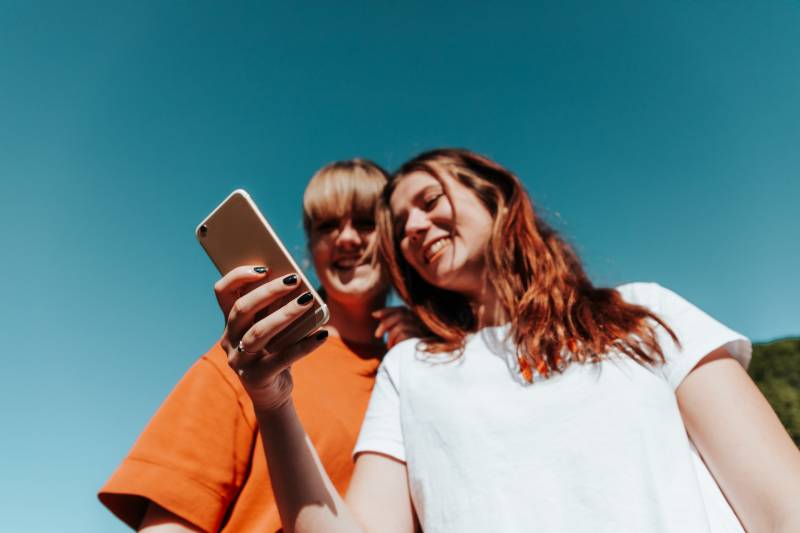Meet Xenia, a junior at Northwestern University, who leans into math and science, runs dutifully in her spare time and tends toward introversion. Now meet her fraternal twin, Madeleine, a double major in English and Philosophy at Johns Hopkins, who prefers reading and writing over sports and as a child was dubbed the school’s mayor by her father after he noticed her making the rounds in the cafeteria during a second-grade parent/child lunch. The girls get along, their personality differences allowing each to carve out an independent identity and buffering both from excessive rivalry.
Another way these twins differ? When they were in high school, Xenia spurned all social media, the only girl in her grade, she thought, without Snapchat, Instagram, Facebook, TikTok, Houseparty and all other social media sites on her phone. “I was never interested in it,” she told me. Madeleine, on the other hand, while not a devotee, relied on Snapchat to keep in touch with distant friends and used Instagram and other sites to stay on top of school gossip, fashion trends and entertainment news. “Interfacing with technology is Madeleine’s varsity sport,” her father said.
Most adolescents would seem to follow Madeleine’s path. Almost all teenagers used smart phones in 2022, the Pew Research Center reported, and 53% of kids in cities acknowledged being online “almost constantly.” As for social media, most teenagers are all in: TikTok is now the most favored platform, used by 67% of 13-17 year olds, followed by Instagram, Snapchat and Facebook, whose popularity has declined dramatically. More and more research has shown that excessive use of social media undermines kids’ mental health. A British study of nearly 12,000 teenagers found that frequent social media use is associated with a lower sense of well-being, especially among girls who experienced cyberbullying or diminished sleep. Social psychologist and author Jean Twenge, who has explored the link between excessive screen use and deteriorating mental health, blames the former for triggering the latter, noting that rates of depression and suicide among teenagers have increased since smart phones became ubiquitous.
Though far from a controlled lab experiment, twins who grew up in the same house and diverged over their phone use offer interesting insights into how Instagram and its ilk can amplify what’s already there. How the two have adapted their social media patterns during college also reveals how the wider environment can shape its use.
In high school, Madeleine was the first to admit that she was easily distracted and bored, as well as quick to lose things, including the phone she relied on to stay in touch with friends. “I tend to leave my phone everywhere,” she told me. She wasn’t one to post pictures often, a habit that annoyed some of her friends, but she did check Instagram and Snapchat once or twice a day, she said, for up to an hour in total time. That was a far cry from many girls Madeleine knew, including some who tracked their accounts for six hours a day, she said. She liked the way big stories on Instagram or Snapchat sparked conversation and mentioned that a public spat on YouTube among dueling makeup artists preoccupied her entire grade. What Madeleine enjoyed most, though, was how these platforms allowed her to stay connected with the friends in Australia she met during a student exchange program.


